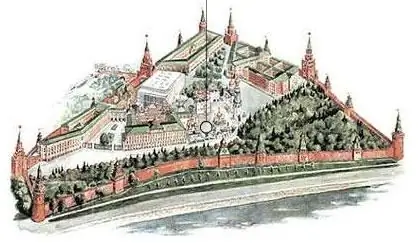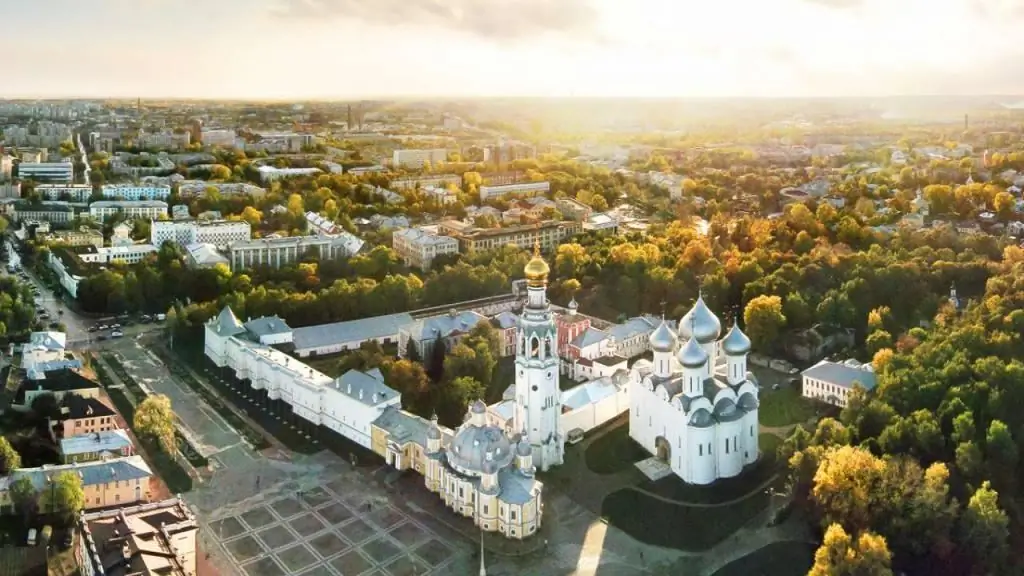- Author Harold Hamphrey [email protected].
- Public 2023-12-17 10:06.
- Last modified 2025-01-24 11:10.
The name "Sennaya Square" is not original. There are such names in Kyiv and Odessa, and in translation into various languages - in many cities of Europe. For a long time, fodder, including hay, was traded in these areas. Hence the name of the markets. And then the squares were named after them. Of course, now they do not sell either hay or oats. And there are no markets for them now. But the names remain. In this article we will get acquainted with Sennaya Square, which is located in St. Petersburg. What is located on the site of this oldest market in the city on the Neva?

History of the Square
In fact, the oldest bazaar in St. Petersburg was not located here. And it was called "Marine". But in 1736-1737, large-scale fires took place in the city. The entire Morskaya Sloboda burned out, and with it the market. Then the government ordered to move the place of trade closer to the outskirts, across the Moika River. Where Moskovsky Prospekt is now located, there was a big road. Merchants and peasants who wanted to sell their products to the townspeople followed it to St. Petersburg. And at the gates of the city, the authorities ordered to cut down the forest and equip the place of trade. This market was first called the Big Market, and then the Horse Market, because graduallycrystallized his specialization - the sale of fodder. The name "Sennaya Square" appeared already at the end of the 18th century, when houses began to appear around the marketplace. Then the specialization of the market narrowed. Now they began to trade hay, firewood and straw on it.

Belly of St. Petersburg
The city gradually grew. At the beginning of the 19th century, Sennaya Square was no longer a suburb. But since the market was considered cheap and crowded (the peasants did not pay a tax on trade), the poor settled here. They traded hay and firewood from the ruins, from carts. The square was surrounded by miserable shacks, dirty dens, cheap taverns. The atmosphere of this area was similar to the world described by Zola in The Belly of Paris, but without the gloss of the French capital. The life of Sennaya Square in St. Petersburg was vividly reflected in his novel Crime and Punishment by Fyodor Dostoevsky. Since petty swindling by merchants and pickpocketing flourished in the market, the authorities immediately arranged a place of punishment - as a warning to the rest. Those caught in the hot were beaten with whips and whips in front of all the people. And later they began to punish runaway serfs there. In 1831, a cholera riot was forcefully suppressed on Sennaya Square, since the epidemic manifested itself more in the unsanitary conditions of the local slums. All attempts by the authorities to equip the area were unsuccessful. In the 1880s, four pavilions for trade were erected here. But the area was still synonymous with slums, stinking rooming houses, brothels and suspicious taverns for Petersburgers.

Sennaya Square (St. Petersburg): attractions
Does it seem like a tourist can watch in this place, which for a long time was a firewood market, surrounded by the shacks of the poor? But there are several buildings on the square worthy of attention. The guardhouse is the oldest building that has survived to this day. It was built in the market to maintain order. According to documents, Fyodor Dostoevsky himself was in this guardhouse. In the writer's novel Crime and Punishment, many episodes take place on Sennaya Square. In a tavern near her, Raskolnikov hears about an old usurer, and a murder plan is born in him. On the same square, repentance comes to him, and he almost confesses to the crime he has committed, kneeling in the middle of the Haymarket. But the people there, who are not used to such antics, do not notice this.
Church of the Savior
But the most significant attraction of this place is the Sennaya Ploshchad metro station (St. Petersburg). This building has a long history. It is older than the city subway. As you know, no market in Russia could do without a church, or at least a chapel. There, the sellers lit a candle for profitable trading. There was a similar wooden temple at the Hay Market. In 1753, the we althy merchant Savva Yakovlev ordered the Russian architect Andrey Kvasov to build a large stone church on the site of a small church. Built in 1765, the temple was a vivid example of the late Baroque. Five-headed, light and airy, it could accommodate up to five thousand people. The church was rebuilt three times, but it retained its baroque appearance. Temple spared by bombingGerman aviation, but the Soviet government treated him worse than the invaders. The fact is that in 1961 the church was blown up, and a metro station lobby was built in its place.

How to get to Sennaya Square
Naturally, it's easier to get to "Peter's womb" by subway. The metro station (blue line) goes directly to the square. In addition, the lobby is a kind of sad historical landmark. After the revolution, the market was called Oktyabrsky, and in the 30s it was completely liquidated. In 1991, the former name was returned to the place (instead of Peace Square - Sennaya Square). Once in the center there was a stele donated by the French for the 300th anniversary of the city. But now it has been dismantled. Sennaya Square can also be reached by land transport. These are tram number 3 and buses number 49 and 181.






